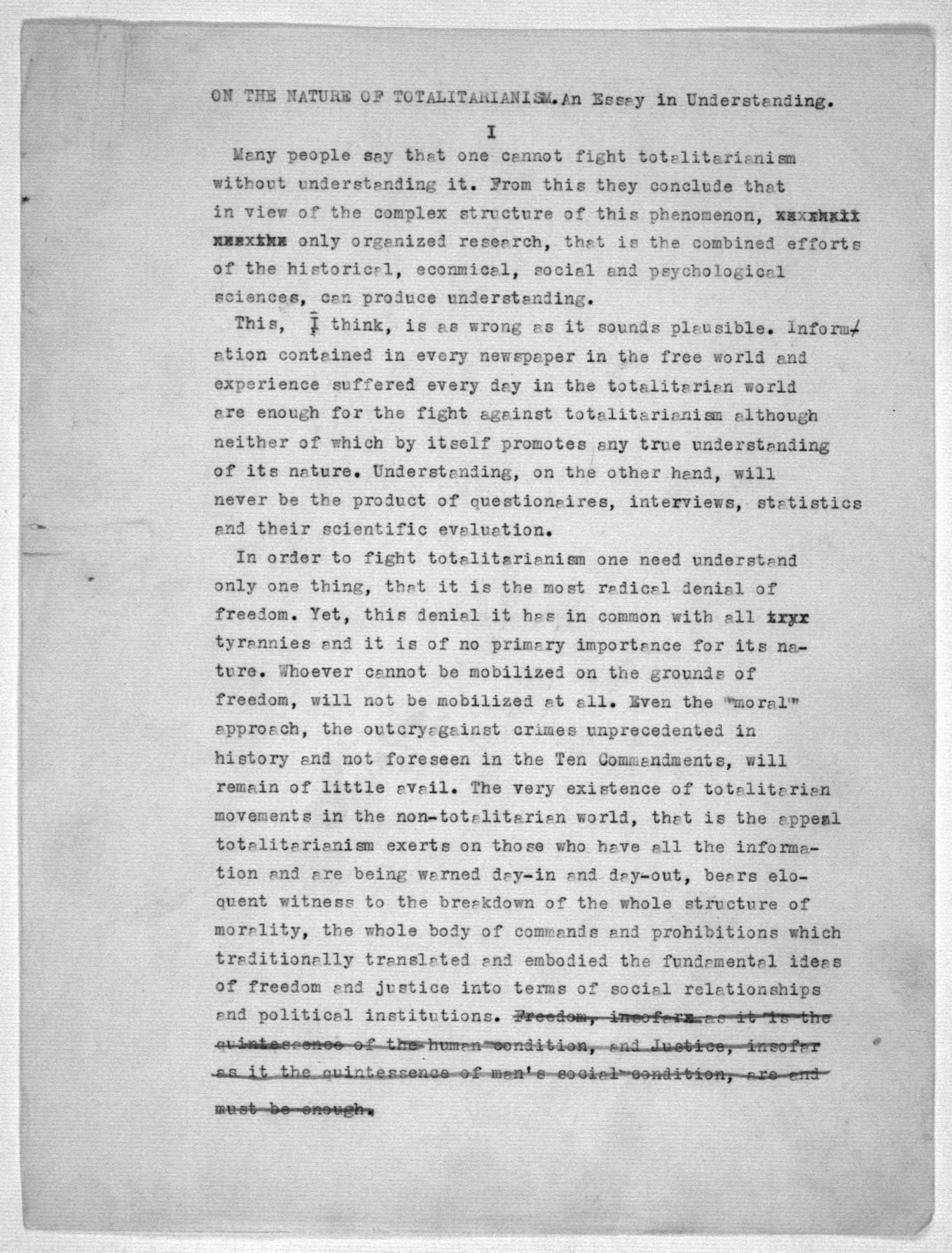Dear Reader,
Welcome to #20Tuesdays: 20 lessons from Hannah Arendt’s The Origins of Totalitarianism.
As we barrel toward another election, I wanted to create a space for people to come together.
Thinking back on the past ten years of teaching Origins, I’ve made a list of the most important lessons from Arendt’s work that students return to time and again. From now until November 5th, I will share one lesson with you on Tuesdays.
You can find past posts here.
Until Tuesday,
Sam
Lesson #15: Totalitarianism is a new form of government.
Key quotes:
Totalitarianism strives not toward despotic rule over men, but toward a system in which men are superfluous.
The totalitarian attempt at global conquest and total domination has been the destructive way out of all impasses.
The point is that both Hitler and Stalin held out promises of stability in order to hide their intention of creating a state of permanent instability.
Core idea:
Totalitarianism appeared as a new form of government in the middle of the 20th century. The phenomenal appearance of totalitarianism, for Arendt, caused a break in tradition that exploded previously held “categories of thought and standards of judgment.”
What defines totalitarianism?
Arendt added totalitarianism as a radically new form of government to the list of traditional forms of government that had been accepted since antiquity. The traditional forms each contained the possibility of perversion: monarchy (the rule of one) and its perversion in tyranny; aristocracy (the rule of the best) and its corruption in oligarchy or the rule of cliques; and democracy (the rule of many) and its distortion in ochlocracy or mob rule. Totalitarian regimes have no perversion, or opposite.
The hallmark of totalitarianism is that it rested upon the atomization of the masses and the creation of "superfluous" masses (who had no legal rights). A process of radical evil created superfluous masses. (We covered that here.)
Here are the key elements of totalitarianism as a new form of government:
Rests on the atomization of the whole.
Total elimination of spontaneity
Aims at world domination (expansion for the sake of expansion)
Does away with the rule of law
The use of death camps
Further reading:
Jerome Kohn, “Totalitarianism, the inversion of politics”
Roy T. Tsao, “The Three Phases of Arendt’s Theory of Totalitarianism”
Questions for Conversation:
How did the collapse of the nation-state and the rise of imperialism contribute to the development of totalitarian regimes in the 20th century?
How does social media contribute to or counteract atomization of society?
How might democratic institutions be safeguarded against the rise of totalitarianism?
Thank you for reading!
Until Tuesday,
Sam





